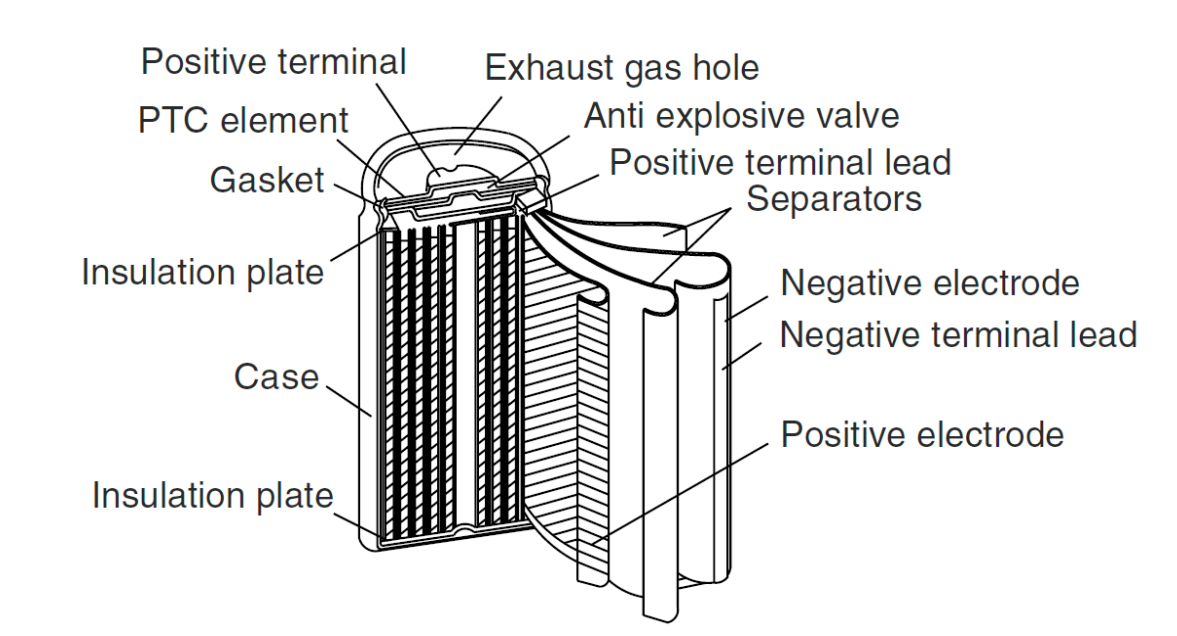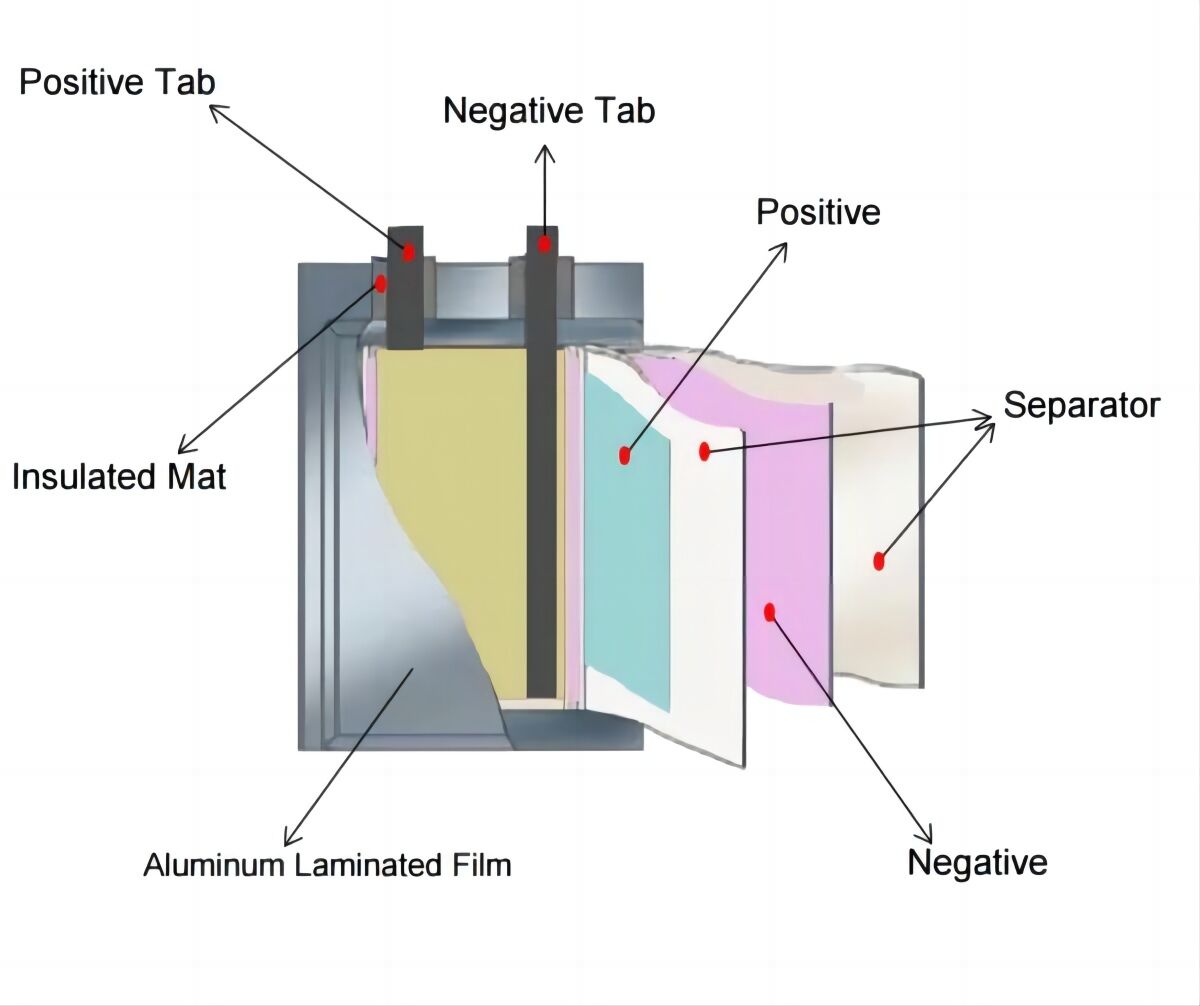Berita
Perbandingan Bateri: Meneroka Pelbagai Jenis Bateri
Pengenalan:
Dalam bidang teknologi bateri, tiga jenis utama menguasai pasaran: silinder, prismatik dan kantung. Setiap jenis mempunyai ciri unik dan menawarkan kelebihan yang berbeza. Dalam artikel ini, kami akan menyelidiki ciri setiap jenis bateri dan membandingkannya merentas pelbagai faktor.
membandingkan jenis bateri:
Bateri Silinder:
Kelebihan:
Ditubuhkan dan kos efektif: Bateri silinder mempunyai sejarah pengeluaran perindustrian yang panjang, membanggakan proses pembuatan yang matang dan kecekapan pengeluaran yang tinggi. Ini bermakna kos yang lebih rendah dan hasil yang lebih tinggi berbanding jenis lain.
Kebolehpercayaan dan keselamatan yang unggul: Bateri silinder menjalani ujian yang meluas semasa pengeluaran, ditambah dengan perlindungan tambahan yang disediakan oleh selongsong keluli mereka, memastikan kebolehpercayaan dan keselamatan yang sangat baik.
Kelemahan:
Berat dan saiz: Selongsong keluli bagi bateri silinder menyumbang kepada beratnya, menghasilkan ketumpatan tenaga yang lebih rendah berbanding jenis lain. Selain itu, bentuk silindernya membawa kepada penggunaan ruang yang tidak cekap.
Kapasiti terhad: Kekonduksian haba jejarian bateri silinder mengehadkan bilangan lapisan penggulungan, mengehadkan kapasiti individu. Ini memerlukan penggunaan berbilang bateri dalam aplikasi seperti kenderaan elektrik (EV), menambahkan kerumitan dan potensi masalah sambungan.

Bateri Prismatik:
Kelebihan:
Perlindungan yang dipertingkatkan: Bateri prismatik menampilkan aloi aluminium atau sarung keluli tahan karat, menawarkan perlindungan yang lebih baik berbanding bateri kantung dan meningkatkan keselamatan keseluruhan.
Struktur dipermudah dan berat berkurangan: Bateri prismatik mempunyai reka bentuk yang ringkas dan menggunakan bahan ringan, menghasilkan ketumpatan tenaga yang lebih tinggi dan berat berkurangan berbanding bateri silinder. Ini mengurangkan bilangan sel yang diperlukan dalam modul bateri dan mengurangkan permintaan pada sistem pengurusan bateri (BMS).
Kelemahan:
Kekurangan penyeragaman: Rangkaian pelbagai model bateri prismatik dalam pasaran menimbulkan cabaran dalam menyeragamkan proses pembuatan. Ini boleh menyebabkan pengurangan automasi, variasi ketara antara sel dan jangka hayat pek bateri yang lebih pendek.

Bateri Poket:
Kelebihan:
Keselamatan yang dipertingkatkan: Bateri kantung disarungkan dalam filem komposit aluminium-plastik, mengurangkan risiko letupan berbanding dengan selongsong tegar yang digunakan dalam jenis lain.
Ketumpatan tenaga tinggi: Bateri kantung lebih ringan, menawarkan pengurangan berat sebanyak 40% berbanding bateri sarung keluli dengan kapasiti yang sama, dan pengurangan 20% berbanding bateri sarung aluminium, menghasilkan ketumpatan tenaga yang unggul.
Kelemahan:
Penyeragaman dan cabaran kos: Mencapai penyeragaman menimbulkan kesukaran untuk bateri kantung, yang membawa kepada peningkatan kos. Selain itu, pergantungan berat pada filem aluminium-plastik yang diimport dan ketidakkonsistenan dalam kualiti memberikan cabaran kepada pengeluar.
Ringkasan:
Setiap jenis bateri (silinder, prismatik dan kantung) mempunyai kekuatan dan kelemahan yang unik. Sel silinder menawarkan keberkesanan kos dan prestasi yang konsisten, manakala sel prismatik memberikan perlindungan yang dipertingkatkan dan pembinaan yang dipermudahkan. Bateri kantung mempunyai ketumpatan tenaga yang tinggi tetapi menghadapi cabaran dalam penyeragaman dan kos. Pilihan jenis bateri bergantung pada faktor seperti sifat bahan, keperluan aplikasi dan spesifikasi produk. Tidak kira jenisnya, keselamatan tetap diutamakan, dan pematuhan kepada piawaian keselamatan yang berkaitan adalah penting.


